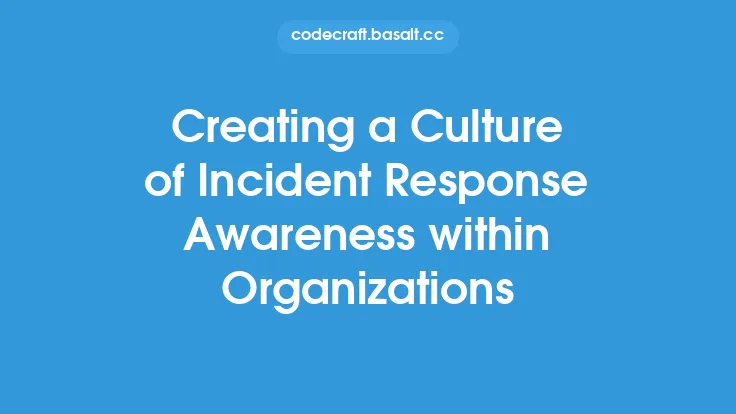In the realm of software engineering, collaboration is a crucial element that can make or break a project. As software systems become increasingly complex, the need for effective collaboration among team members, stakeholders, and even across different departments has never been more pressing. Building a culture of collaboration is essential for software engineering teams to deliver high-quality products, meet deadlines, and stay competitive in the market. This article will delve into the importance of collaboration in software engineering, the benefits it brings, and the strategies for fostering a collaborative culture.
Introduction to Collaborative Software Engineering
Collaborative software engineering is an approach that emphasizes the importance of teamwork, communication, and mutual support in software development. It recognizes that software engineering is a social activity that involves not only technical skills but also social and emotional intelligence. By adopting a collaborative approach, software engineering teams can leverage the diverse skills, experiences, and perspectives of their members to produce better software products. Collaborative software engineering is built on the principles of transparency, accountability, and continuous improvement, which enables teams to respond quickly to changing requirements and deliver high-quality software products.
Benefits of Collaboration in Software Engineering
Collaboration in software engineering offers numerous benefits, including improved product quality, increased productivity, and enhanced customer satisfaction. When team members collaborate effectively, they can share knowledge, expertise, and resources, which leads to better decision-making and problem-solving. Collaboration also promotes a culture of innovation, where team members feel encouraged to experiment, take risks, and try new approaches. Furthermore, collaboration helps to reduce errors, bugs, and rework, which can significantly improve the overall efficiency and effectiveness of the software development process.
Strategies for Building a Collaborative Culture
Building a collaborative culture in software engineering requires a deliberate and sustained effort. Here are some strategies that can help:
- Establish clear goals and objectives: Define a shared vision and goals that align with the organization's mission and values. This helps to create a sense of purpose and direction, which is essential for collaboration.
- Foster open communication: Encourage open, honest, and transparent communication among team members, stakeholders, and departments. This can be achieved through regular meetings, feedback sessions, and collaboration tools.
- Promote cross-functional teams: Assemble teams with diverse skills, expertise, and perspectives to work on specific projects or tasks. This helps to break down silos and foster collaboration across different departments and functions.
- Encourage active listening and empathy: Teach team members to listen actively, ask questions, and seek feedback. This helps to build trust, understanding, and empathy, which are essential for effective collaboration.
- Use collaboration tools and platforms: Leverage collaboration tools, such as version control systems, project management software, and communication platforms, to facilitate collaboration and knowledge sharing.
Technical Aspects of Collaborative Software Engineering
From a technical perspective, collaborative software engineering involves the use of various tools, techniques, and methodologies to facilitate collaboration and knowledge sharing. Some of the key technical aspects of collaborative software engineering include:
- Version control systems: Tools like Git, SVN, and Mercurial help teams manage changes to code, collaborate on code development, and track changes.
- Agile methodologies: Frameworks like Scrum, Kanban, and Lean help teams collaborate on software development, prioritize tasks, and deliver working software in short cycles.
- Continuous integration and continuous deployment (CI/CD): Practices like automated testing, continuous integration, and continuous deployment help teams collaborate on software development, ensure quality, and deliver software quickly and reliably.
- Collaboration platforms: Tools like Slack, Microsoft Teams, and Asana help teams communicate, collaborate, and share knowledge in real-time.
Overcoming Challenges to Collaboration
Despite the benefits of collaboration, software engineering teams often face challenges that can hinder effective collaboration. Some of the common challenges include:
- Communication barriers: Language, cultural, and geographical barriers can make communication difficult, which can hinder collaboration.
- Conflicting priorities: Different stakeholders may have conflicting priorities, which can create tension and hinder collaboration.
- Lack of trust: Trust is essential for collaboration, but it can be difficult to establish, especially in distributed teams.
- Technical debt: Technical debt can create barriers to collaboration, as team members may struggle to understand and work with legacy code.
Best Practices for Sustaining Collaboration
To sustain collaboration in software engineering, teams should adopt best practices that promote continuous improvement, learning, and growth. Some of the best practices include:
- Regular retrospectives: Hold regular retrospectives to reflect on progress, identify areas for improvement, and adjust processes and practices accordingly.
- Continuous learning: Encourage team members to learn new skills, attend conferences, and participate in training sessions to stay up-to-date with industry trends and best practices.
- Knowledge sharing: Encourage team members to share knowledge, expertise, and experiences through blog posts, tutorials, and workshops.
- Recognition and rewards: Recognize and reward team members for their contributions, achievements, and collaboration efforts to motivate and encourage them to continue collaborating effectively.
Conclusion
Building a culture of collaboration in software engineering is essential for delivering high-quality software products, meeting deadlines, and staying competitive in the market. By adopting a collaborative approach, software engineering teams can leverage the diverse skills, experiences, and perspectives of their members to produce better software products. By establishing clear goals and objectives, fostering open communication, promoting cross-functional teams, and using collaboration tools and platforms, teams can build a collaborative culture that promotes innovation, productivity, and customer satisfaction.





